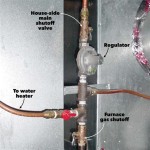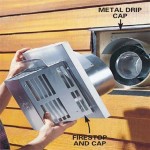How to Install Gas Fireplace Logs: A Comprehensive Guide
Installing gas fireplace logs is a process that brings the warmth and ambiance of a traditional wood-burning fire to a home without the mess and hassle. While professional installation is always recommended, understanding the process allows homeowners to make informed decisions and potentially undertake the task themselves, provided they possess the necessary skills and strictly adhere to safety precautions. This article provides a detailed walkthrough of the gas fireplace log installation process, covering essential safety considerations, required tools and materials, step-by-step instructions, and troubleshooting tips.
Before commencing any installation, it is paramount to understand that working with gas lines carries inherent risks. A gas leak can lead to explosions, fires, or carbon monoxide poisoning. Improper installation not only poses a danger to the occupants of the home but also could lead to property damage or legal liabilities. Therefore, if there is any uncertainty about the procedure or competence in handling gas connections, it is strongly advised to seek the services of a qualified gas technician or licensed professional.
Gas fireplace logs are typically available in two primary types: vented and ventless (or vent-free). Vented logs require a fully functioning chimney or vent to exhaust combustion byproducts, whereas ventless logs are designed to burn cleanly enough to be used without a chimney. The type of logs chosen will impact the installation process and any fireplace modifications required. This article primarily focuses on the installation of vented gas logs, but will also touch upon the key considerations for ventless log installation.
Safety First: Essential Precautions Before Installation
Prior to beginning any work, confirm that the gas supply to the fireplace is completely shut off. Locate the gas shut-off valve, which is usually situated near the fireplace or along the gas supply line feeding the unit. Use a wrench to turn the valve to the "off" position. Double-check that the gas supply is indeed cut off by attempting to light any other gas appliances connected to the same line, such as a stove or water heater. If in doubt, contact the gas company to confirm that the gas is off to the fireplace.
It is also crucial to ensure adequate ventilation during the installation process. Open windows and doors to allow fresh air to circulate. This helps prevent the accumulation of any gas that may escape while disconnecting or reconnecting gas lines. During the procedure, employ a gas leak detector spray or a soapy water solution to check for leaks at all connections once the gas supply is turned back on. Never use an open flame to test for gas leaks.
Furthermore, carefully read and understand the manufacturer's instructions that accompany the gas logs. These instructions provide specific guidance tailored to the particular model, including correct log placement and safety recommendations. Ignoring the manufacturer's instructions could lead to improper installation, potential hazards, or voiding the warranty. Ensure the fireplace is clean and free of any debris before you begin. Remove any existing logs, grates or embers that may be present from previous use.
Tools and Materials Required for Installation
Having the right tools and materials at hand significantly streamlines the installation process and helps ensure a safe and successful outcome. The following list outlines the essential items typically needed for installing gas fireplace logs:
- Gas Logs Kit: Including the logs themselves, burner assembly (if applicable), and any necessary connectors or hardware.
- Pipe Wrench: For tightening or loosening gas pipe connections.
- Adjustable (Crescent) Wrench: For various tightening and loosening tasks.
- Screwdrivers (Various Sizes): Both flathead and Phillips head.
- Gas Pipe Thread Sealant (Pipe Dope): Specifically designed for gas lines.
- Gas Leak Detector Spray or Soapy Water: For checking gas connections for leaks.
- Gloves and Safety Glasses: For personal protection.
- Level: To ensure the burner assembly is level.
- Vacuum Cleaner or Brush: For cleaning the fireplace before installation.
- Flashlight or Work Light: To provide adequate illumination.
- Measuring Tape: To measure the firebox dimensions and log placement.
- Carbon Monoxide Detector: To install near the fireplace area after installation.
It is important to reiterate that using the appropriate gas pipe thread sealant is crucial. Standard plumbing tape is not suitable for gas lines and can lead to leaks. The sealant should be specifically formulated for use with natural gas or propane, depending on the type of fuel the fireplace uses. In addition, make sure all tools used comply with safety standards.
Step-by-Step Installation Process for Vented Gas Logs
The following steps provide a general outline for installing vented gas logs. It is crucial to always consult the manufacturer's instructions for the specific log set being installed, as variations may exist.
- Preparation: As previously stated, ensure the gas supply to the fireplace is completely shut off and the firebox is clean and cleared of any debris. Provide adequate ventilation to the area.
- Remove Existing Components (If Applicable): If there are any existing grates, burners, or other components in the fireplace, carefully remove them. Disconnect any gas connections, ensuring the gas valve is closed.
- Install the Burner Assembly: Place the burner assembly into the firebox, following the manufacturer's instructions for placement and orientation. Ensure the burner is level using a level. Secure the burner assembly in place using the provided hardware, if any.
- Connect the Gas Line: Using the appropriate fittings and gas pipe thread sealant, connect the gas line to the burner assembly. Ensure all connections are tight and secure. Use the pipe wrench and adjustable wrench as needed. Be cautious not to overtighten the connections, as this could damage the fittings.
- Log Placement: Carefully place the gas logs onto the burner assembly, following the manufacturer's instructions for log positioning. Proper log placement is crucial for a realistic flame pattern and safe operation. Ensure the logs do not obstruct the pilot light or burner ports.
- Check for Gas Leaks: Once all connections are made and the logs are in place, carefully turn the gas supply back on at the shut-off valve. Use the gas leak detector spray or soapy water solution to check all gas connections for leaks. If any leaks are detected, immediately turn off the gas supply, tighten the connections, and recheck for leaks.
- Test the Fireplace: After confirming there are no gas leaks, ignite the fireplace pilot light, following the manufacturer's instructions. Observe the flame pattern to ensure it is even and realistic. Adjust the log placement if necessary to achieve the desired flame appearance.
- Install a Carbon Monoxide Detector: After installation, install a carbon monoxide detector near the fireplace area for safety.
Proper log placement is not merely for aesthetic purposes; it directly impacts the combustion efficiency and safety of the gas fireplace. Obstructed burner ports can lead to incomplete combustion, resulting in the production of carbon monoxide. The manufacturer's instructions for log placement must be followed precisely. If uncertain, consult a qualified professional.
Ventless Gas Log Considerations
Ventless gas logs differ significantly from vented logs in their installation requirements. Ventless logs rely on a specialized burner system and oxygen depletion sensor (ODS) to ensure safe operation without a chimney. The ODS shuts off the gas supply if the oxygen level in the room drops to an unsafe level, indicating incomplete combustion.
Installing ventless gas logs requires careful attention to the manufacturer's instructions and adherence to local building codes. In particular, the following points must be considered:
- Room Size: Ventless gas logs require a minimum room size to ensure adequate ventilation and prevent oxygen depletion. The manufacturer's instructions specify the minimum room size for the particular log set.
- Clearances: Ensure adequate clearances are maintained between the gas logs and any combustible materials, such as mantels, walls, or furniture. The manufacturer's instructions provide specific clearance requirements.
- ODS Functionality: Verify that the ODS is functioning correctly. The ODS should shut off the gas supply if the pilot light is extinguished or if the oxygen level drops.
- Ventilation: Even though ventless logs do not require a chimney, some degree of ventilation is still recommended. Opening a window slightly can help to ensure adequate air circulation.
- Local Codes: Check local building codes and regulations regarding the use of ventless gas logs. Some jurisdictions may have restrictions or prohibitions on their use.
Ventless gas logs produce water vapor as a byproduct of combustion. In some cases, this can lead to elevated humidity levels in the home. Using a dehumidifier can help mitigate this issue. Moreover, it is critical to maintain cleanliness of ventless logs to ensure proper combustion.
In conclusion, installing gas fireplace logs can be a manageable task for homeowners with the appropriate skills and knowledge. Prioritizing safety, carefully following the manufacturer's instructions, and using the correct tools and materials are essential for a successful and safe installation. If any doubts or uncertainties arise, seeking the expertise of a qualified gas technician or licensed professional is always the recommended course of action.

How To Select And Install A Gas Fireplace Log Set Fireplaces Direct Learning Center

How To Select And Install A Gas Fireplace Log Set Fireplaces Direct Learning Center

How To Put In A Gas Log Set For Fireplace

How To Install Gas Logs 13 Steps With S Wikihow

How To Install Gas Logs 13 Steps With S Wikihow

How To Install Gas Logs 13 Steps With S Wikihow

Episode 276 Installing A Gas Log Set In The Family Room Fireplace

Can I Install Gas Logs In My Existing Fireplace Thomas Bros Propane

How To Put In A Gas Log Set For Fireplace Ron Hazelton

Gas Log Installation Sumner County Tn Petitt Heating Cooling








